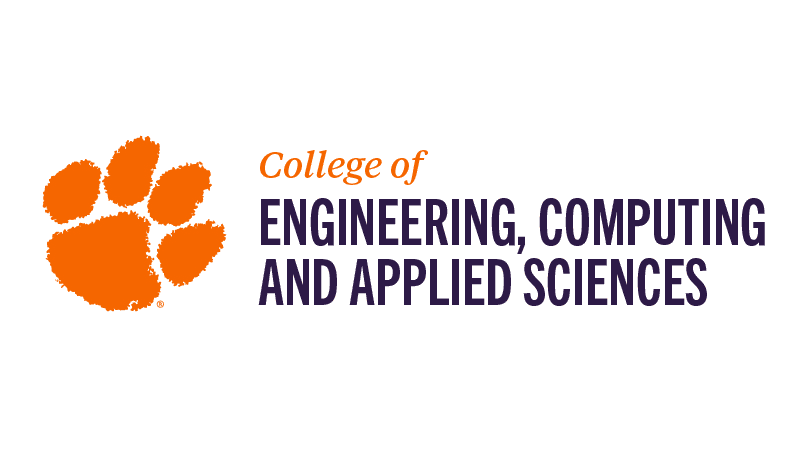John Ballato of Clemson University is one of the globe’s most respected and influential optical-fiber researchers, but go back a little over four decades, and he was a boy crawling onto his father’s lap to watch him write equations and draw circuits in the office of their New Jersey home.
What John couldn’t have understood then was that his father, Art, was doing some of the work that would help underlie modern wireless communications and electronics, including Global Positioning Systems and laptop computers.
John credits those early interactions with helping form the origins of his own career by instilling a fascination with how nature works.

Like many sons, John followed his father’s path, but what is rare is that both became highly successful in complementary yet different fields of engineering.
They have been working together as peers as far back as the 1990s. In addition to the over 1,000 scientific articles they have cumulatively published separately they have co-authored several papers together, including at least 11 in the past 10 years. The Ballatos together account for more than 100 patents, including one they share.
Their work together shows how seeds planted early can sprout in unexpected ways and produce fruits years later that no one could have predicted.
“In the physics and mathematics, there was just a beauty in the way they were written,” John recalled of those early days at his father’s desk side. “He would be working, and he would try to explain it to me, and I wouldn’t understand it. But nonetheless it was something that stuck.”
Those early experiences would eventually lead John to Clemson’s Department of Materials Science and Engineering, where he is now the J.E. Sirrine Chair in Optical Fiber. He has received just about every honor someone in his field can win, reflecting a career of rare influence and impact.
Holy Copernicus!
Art, who is retired and living in Pinehurst, North Carolina with his wife, Margaret, is an adjunct faculty member in Clemson’s Holcombe Department of Electrical and Computer Engineering. They have two children, including an elder son who is a chef in Ohio.
Art remembered John latching onto science early. As a child, John used the back of a book-chapter draft to start writing his own technical paper on astronomy in crayon, Art said.
“It shows that you knew how the world went in the large at that early age,” Art said during a Zoom call with his son. “Holy Copernicus! I mean, this is great stuff.”
Both father and son share a passion for their work and a sense of humor.
John said that one of the difficulties he has in working with his father is that he is retired so threats over tenure and promotion don’t hold much leverage. Art said he’s fortunate to have another “nerd” in the family who likes to talk equations over a beer.
Joe Kolis, the Tobey-Beaudrot Professor of Chemistry at Clemson, has worked with both Ballatos individually and together.
Shortly after John joined Clemson’s faculty, he and Kolis worked together and with others to form the Center for Optical Materials Science and Engineering Technologies (COMSET), a program celebrating its 25th anniversary this year.
‘Tech nerds’
Kolis met Art through John, and it turned out they both had worked with noted scientist and engineer Bob Laudise at Bell Labs. It led to an ongoing collaboration. Kolis said Art sometimes sends him questions about advanced crystal physics.
“They are both tech nerds, and they are both super smart,” Kolis said.
Art, the oldest of six children, was the son of a squash pro and stay-at-home mom. He remembered going to the public library in Queens, New York while growing up to read about early mankind and the discovery of fire. Later, he was fascinated by newspaper headlines reporting that the same species had found a way to communicate with the moon.
By high school, he was synthesizing chemicals with a chemistry set in the basement of the family home. He then attended the Massachusetts Institute of Technology and after graduating went to work in 1958 at the U.S. Army’s Fort Monmouth in New Jersey.
Art built a distinguished career as a leading expert in piezoelectric materials and frequency control devices, advancing technologies critical to military and commercial communications. Over more than 40 years at Fort Monmouth, he developed key innovations in quartz resonators, filters, and MEMS devices, leaving a lasting impact on precision timing systems used worldwide.
His contributions were recognized with numerous awards, including induction into the New Jersey High Tech Hall of Fame in 2006.
Covering the universe
John’s expertise complements his father’s but focuses on different challenges. He specializes in the fabrication of advanced optical fibers, with a focus on materials that enhance laser performance, sensing and communications. His work bridges glass science, photonics and nonlinear optics to push the limits of fiber-based technologies.
Where the telescope ends, the microscope begins. Which of the two has the grander view?
Victor Hugo’s “Les Misérables”
In their collaborations, the Ballatos have studied crystals and glass to better understand how they react to electricity, sound, and light, which could lead to better parts for lasers, sensors and communication systems.
For Art, the work with his son brings to mind a quote from Victor Hugo’s “Les Misérables”: “Where the telescope ends, the microscope begins. Which of the two has the grander view?'”
“We go from GPS and outer space to the crystals, the actual atoms,” Art said. “We cover the universe.”
The Ballatos’ Top Credentials
John Ballato
Fellow of the IEEE, American Ceramic Society, Optica, SPIE, and American Physical Society
Recipient of:
William Streifer Scientific Achievement Award (IEEE, 2022)
George W. Morey Award (American Ceramic Society, 2022)
Aden & Marjorie Meinel Technology Achievement Award (SPIE, 2025)
Art Ballato
Fellow of the IEEE, American Ceramic Society, Acoustical Society of America, IET (London), and Electromagnetics Academy
Inductee, New Jersey High-Tech Hall of Fame
Recipient of:
C.B. Sawyer Memorial Award
Rayleigh Award (IEEE Ultrasonics, Ferroelectrics, and Frequency Control Society)









